Intel Core i9-13900K and i5-13600K Review: Raptor Lake Brings More Bite
by Gavin Bonshor on October 20, 2022 9:00 AM ESTGaming Performance: 720p And Lower
The reason we test games in CPU reviews at lower resolutions such as 720p and below is simple; titles are more likely to be CPU bound than they are GPU bound at lower resolutions. This means there are more frames for the processor to process as opposed to the graphics card doing the majority of the heavy lifting.
There are some variances where some games will still use graphical power, but not as much CPU grunt at these smaller resolutions, and this is where we can show where CPU limitations lie in terms of gaming.
We are using DDR5 memory on the Core i9-13900K, the Core i5-13600K, the Ryzen 9 7950X, and Ryzen 5 7600X, as well as Intel's 12th Gen (Alder Lake) processors at the following settings:
- DDR5-5600B CL46 - Intel 13th Gen
- DDR5-5200 CL44 - Ryzen 7000
- DDR5-4800 (B) CL40 - Intel 12th Gen
All other CPUs such as Ryzen 5000 and 3000 were tested at the relevant JEDEC settings as per the processor's individual memory support with DDR4.
Civilization VI
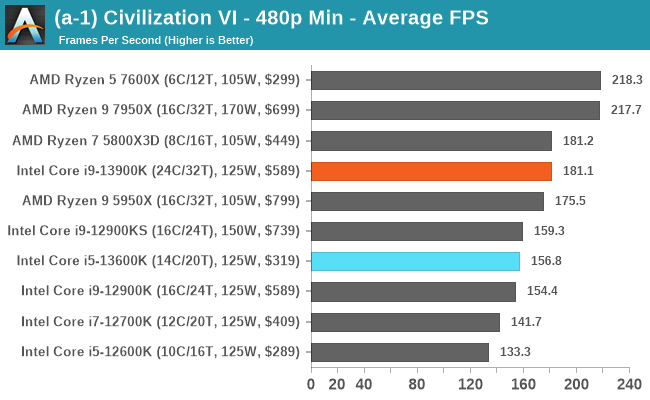
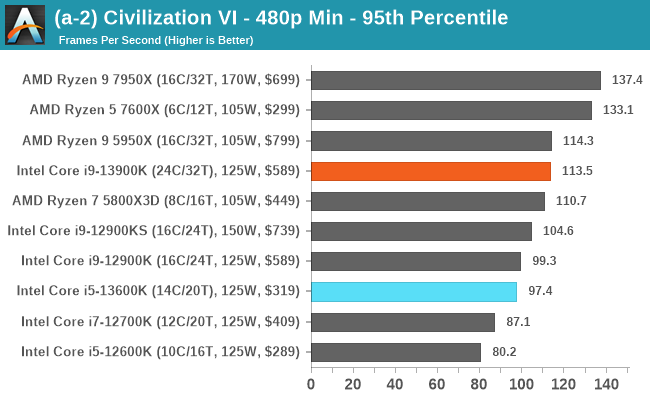
World of Tanks

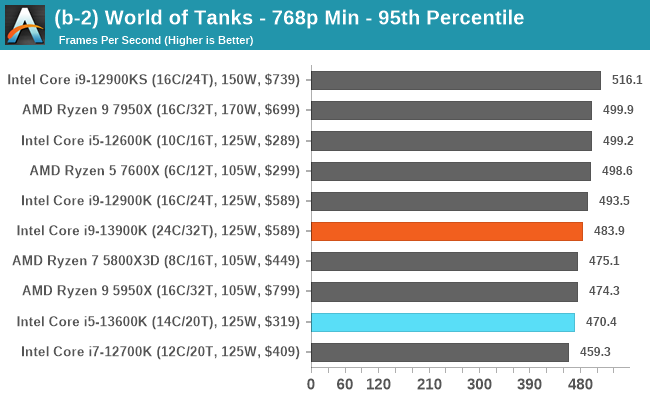
Borderlands 3
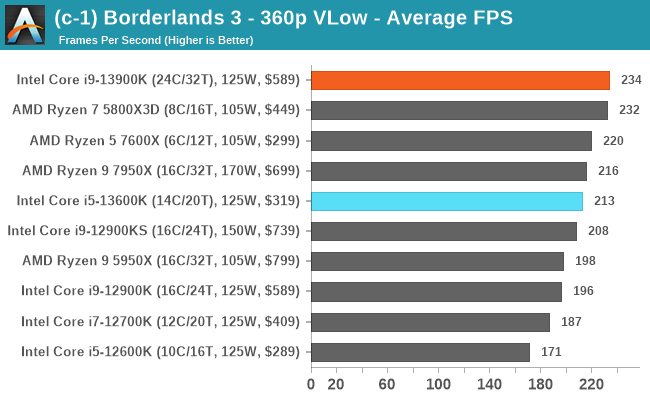
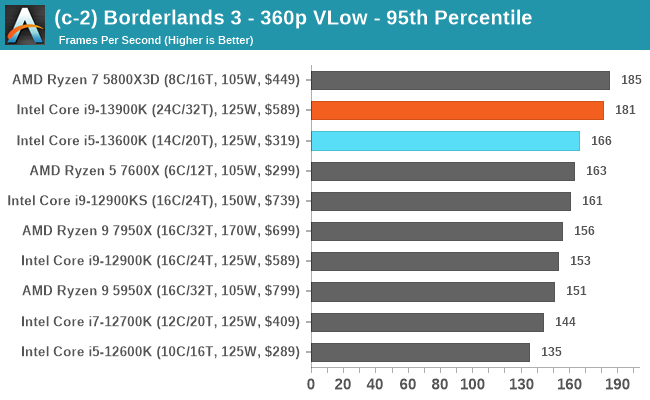
Grand Theft Auto V
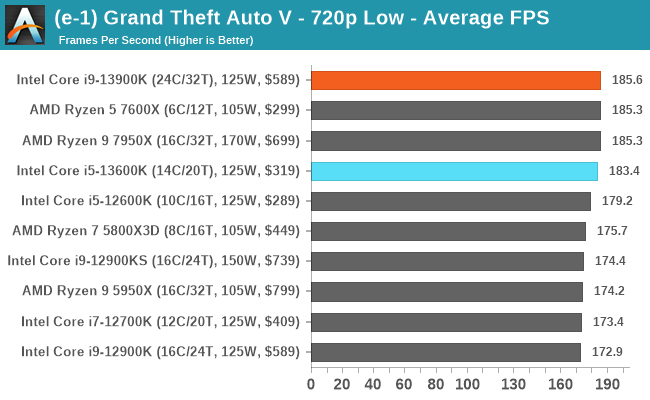
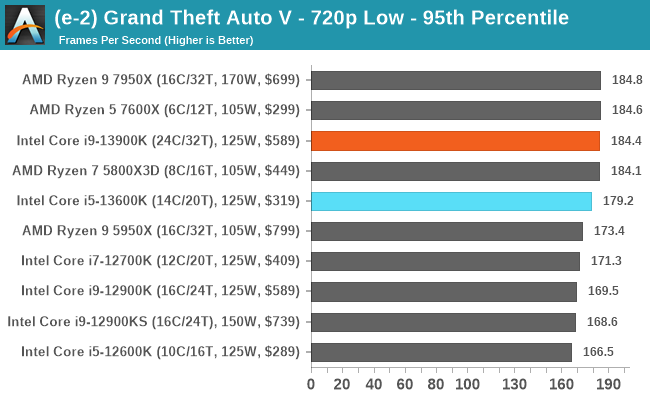
Red Dead Redemption 2
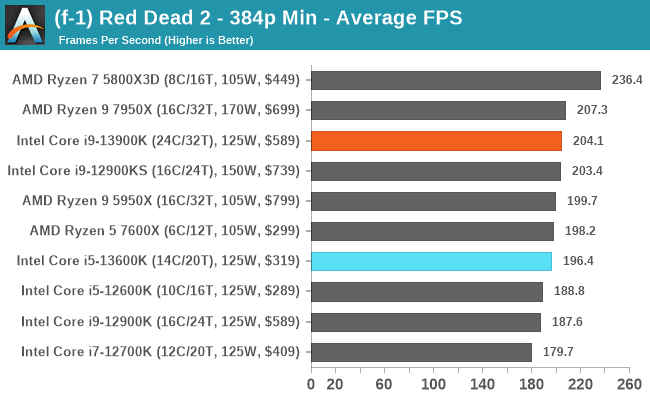
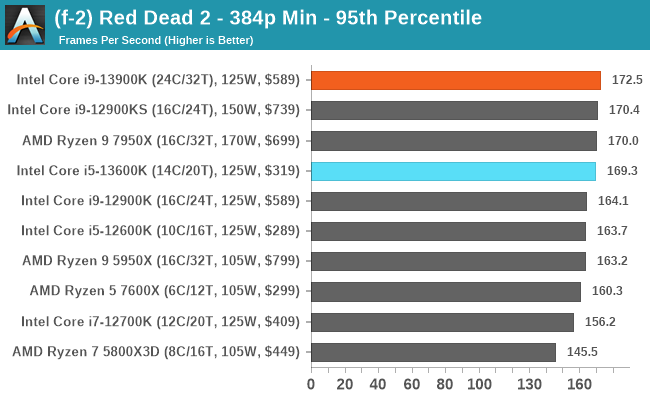
F1 2022
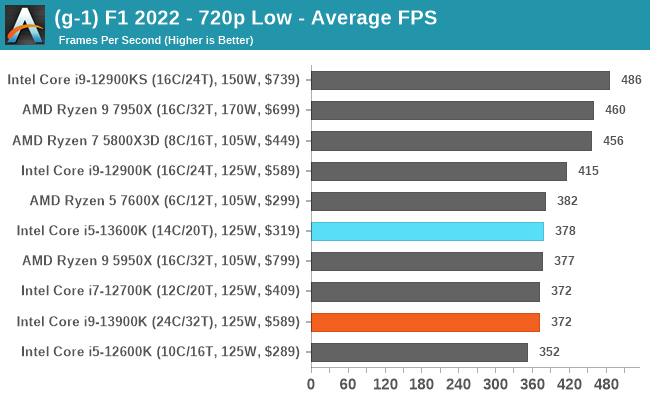
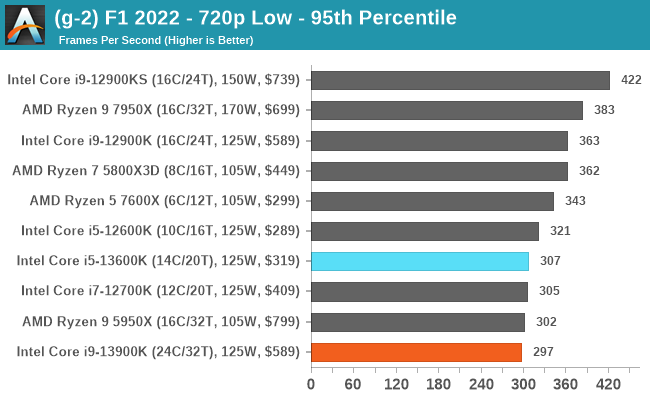
Hitman 3
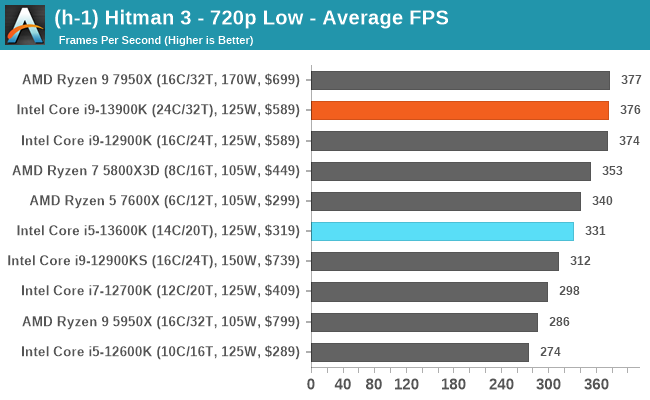

Total War: Warhammer 3
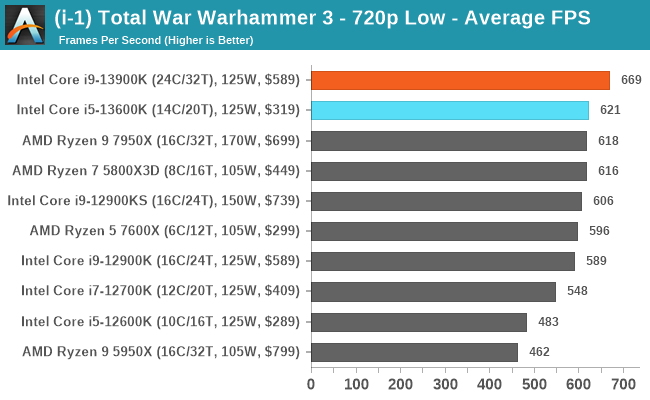
Cyberpunk 2077
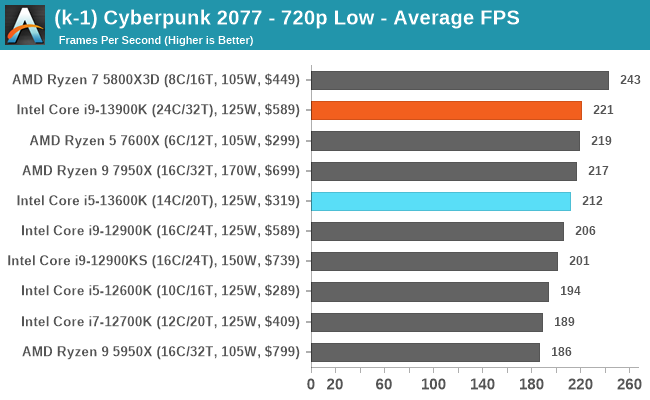
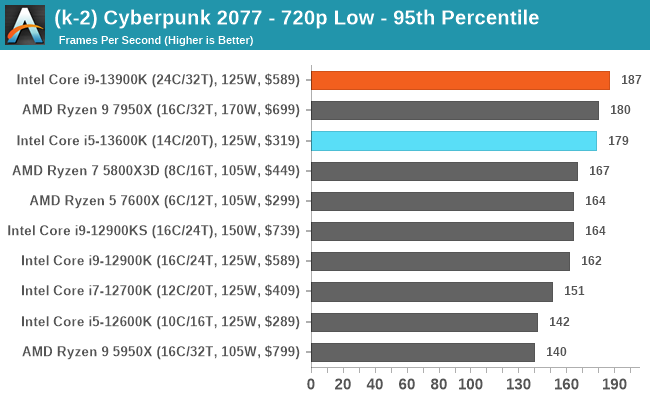
Digesting our results at 720p (and lower) resolutions, we can see that things are quite competitive at the top end, especially with the Core i9-13900K and the Core i9-12900KS across most of the games. Some of the games from our testing look to benefit from a different variable, whether that is core count, quality of cores versus core count and frequency; L3 cache size, or a mixture of all three.
In World of Tanks, the majority of the field of processors on test look to be within a certain margin depending on frequency, IPC, and core count. The Ryzen 9 7950X does well here, although the latest Raptor Lake chips seem to be hovering around the levels of performance as the previous 12th Gen Core chips. In Civ VI, the latest AMD Ryzen 7000 and their Zen 4 cores dominate the field, while the 5800X3D and R9 5950X are also competitive. Behind these come the Intel chips with the Core i9-13900K performing the best of those.
Overall, it's a bit of a mixed bag at 720/480p in terms of performance. There are cases where Raptor Lake performs well, but equally, the same can be said for the Ryzen 7000 chips. But ultimately, none of the top chips here have a 95th percentile frame rate lower than 170fps in any action game, while the more unique Civlization 6 never drops 114fps. Which is to say that these high-end CPUs aren't likely to be a gaming performance bottleneck any time soon – getting a GPU that can keep up at higher resolutions is going to be the harder task.










169 Comments
View All Comments
OreoCookie - Tuesday, October 25, 2022 - link
Yes, TDP has a meaning, and technically, neither company is using it correctly. Back in the good-ol’ days when TDP was really max power under load, it easily allowed you to spec a cooler. Clock boosts were meant to be temporary, transient states so that *on average*, you’d still lie within the thermal budget of the cooler. Obviously, we are well past that.So yes, AMD is playing it a bit loose (+31 %). But Intel is playing it ridiculous: the i9’s max power (as tested here) is 2.7x (!) their “TDP”. Reply
shaolin95 - Thursday, October 20, 2022 - link
AMD does the same thing. dont be a fanboy Replyyh125d - Thursday, October 20, 2022 - link
If you're equating AMD going ~50w over TDP to intel going 210w over TDP, you're being the fanboy. ReplyYojimbo - Friday, October 21, 2022 - link
AMD's turbo clocking is more than 50W. ReplyYojimbo - Friday, October 21, 2022 - link
i checked and it's 60 W. That doesn't make AMD "less dishonest”. Neither company are being dishonest. It means AMD does not intend their desktop products to be used in lower power products. If you want to design a product around a Ryzen 7950X you need a 170 W cooling solution. Whereas you can put an i9 13900K in a product that can only dissipate 125 W. That's the difference between the two processors in terms if the TDPs. That's what TDP means. ReplyTruebilly - Friday, October 21, 2022 - link
I'd like to see someone run that 13900k with 120mm rad ReplyWrs - Friday, October 21, 2022 - link
I mean, it works. The processor automatically steps down the v/f curve and doesn't hiccup with a puny cooler good for 140'ish W. I tested a 12900k with a low-profile AXP-200 from my Skylake days. Performance wasn't bad, over 4GHz all 16 cores. I left all the OC settings on, or else stock E-cores would be 3.9GHz. Replynandnandnand - Thursday, October 20, 2022 - link
Go look at some efficiency curves for the 7950X and 13900K, for example at 19:00 in Hardware Unboxed's review: https://www.youtube.com/watch?v=P40gp_DJk5E ReplyYojimbo - Friday, October 21, 2022 - link
none of the companies "do” anything here. The "doing" is by the people who, though they are ignorant, write seething rants in comment sections damning the companies. Replybji - Friday, October 21, 2022 - link
This issue would be a lot less contentious if technical sites like Anandtech actually used their expertise to curate information presented. They just shouldn't even show TDP as it's simply not relevant to the end users who are reading the articles. They should have some standard benchmark they run to determine peak and maximum sustained power draws and show ONLY those values in any charts. Reply